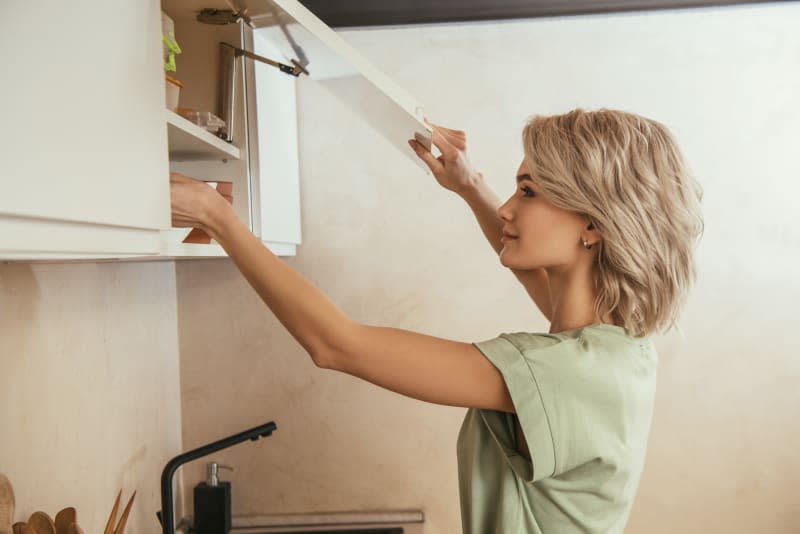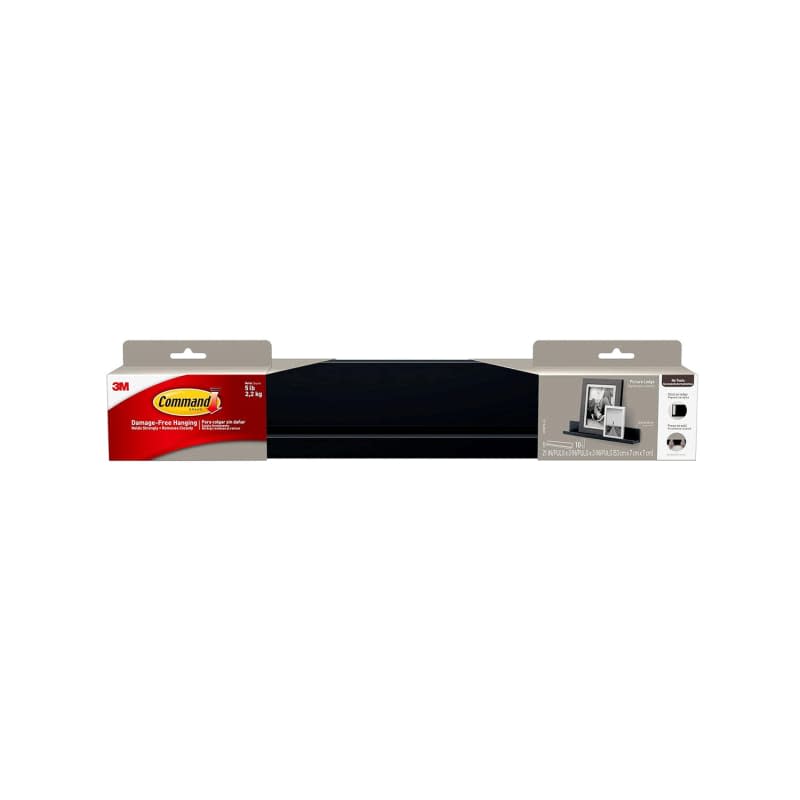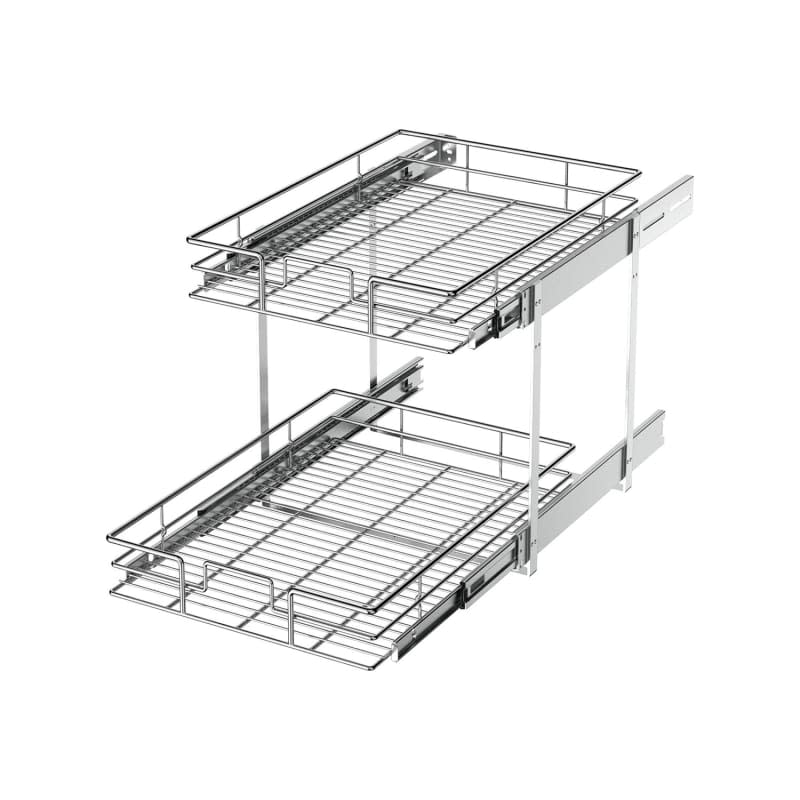5 Things You Should Never Keep in Your Kitchen Cabinets, According to Pro Organizers

Your kitchen cabinets provide storage space and protection from heat, light, and dust for all kinds of kitchen essentials, from dinnerware to paper towels. As helpful and functional as your cabinets can be, they might not always be the best spot to keep certain items, whether there’s a more accessible place to keep them, or because storing them there is actually a hidden hazard.
As I began to reorganize my kitchen cabinets as part of my yearly spring cleaning routine, I wondered if some experts might have some advice on what’s safe and convenient to keep in a cabinet, and what’s better off in other parts of my kitchen — and here’s what they had to say.
5 Things Not to Keep in Your Kitchen Cabinets
1. Pantry Staples
“They’re called staples for a reason — you probably use them every time you cook!” says Julian Thomas, DIY and lifestyle expert and Command partner. For this reason, it’s best to keep certain items such as herbs and spices, flour, sugar, and even coffee either in your pantry (if you have one), or on display in other parts of your kitchen — Thomas suggests repurposing a picture ledge for storing spices — where heat and humidity won’t affect their potency.
Command Picture Ledge
“Instead of storing aromatic coffee beans in cabinets, where light and temperature fluctuations can degrade their flavor, consider using vacuum-sealed containers stored in a cool, dark pantry or drawer,” says Melanie Summers, professional organizer and founder of I Speak Organized. “This not only preserves their freshness, but also maintains the aesthetic appeal of your kitchen.”
2. Cleaning Products
“Cleaning solutions, especially liquids, should not be stored in your kitchen cabinets,” says Thomas. “While under-the-sink organization for cleaning supplies is the norm for many households, this still runs a risk of cross-contamination and harmful exposure. For instance, I let the storage under my kitchen sink get so full that a bottle of liquid dish soap became crushed by overcrowding and began to leak, eventually seeping out of the cabinet onto my hardwood floor.”
According to Thomas, it’s best to label all your bottles clearly and opt for a layered pullout rack for maximizing space under your sink if this is the only spot you have for storing cleaning products. Other types of organization solutions, like my favorite under-sink turntable, can help keep your cleaning products and tools separated and easy to access.
LOVMOR 2 Tier Individual Pull Out Cabinet Organizer
3. Occasional Appliances and Excess Cookware
Overcrowded cabinets with rarely used cookware and appliances can create chaos in your kitchen. Summers suggests hanging pots and pans on a ceiling rack or wall-mounted rail to free up cabinet space and add a stylish, functional element to your kitchen decor.
“Whether it’s a Crock-Pot only used during the colder months of the year or an indoor electric grill when it’s BBQ season, it’s tempting to store these ‘occasional’ kitchen appliances up high in a cabinet out of the way,” says Thomas. “However, depending on your strength and coordination levels, that might not be the best idea. Even storing these items in bottom cabinets is risky, considering so many people experience lower back pain, and bending over to lift heavy equipment is not wise either.”
Thomas recommends carving out space in the garage, pantry, or even a utility closet to store kitchen appliances that you don’t use frequently. When it comes to the appliances collecting dust in your home, Dr. Dan Murauski, director of wellness optimization and longevity at Case Integrative Health, adds that it’s best to donate items that you haven’t used in about a year.
4. Certain Sauces and Condiments
Kitchen cabinets can provide excellent storage for sauces, condiments, and canned goods with long shelf lives. There are a few, however, that should be stored elsewhere to maintain their condition and give you more kitchen cabinet space.
“It’s important to read the labels on shelf-stable sauces to see which ones need to be refrigerated after opening,” says Murauski. “We all know ketchup and mayo need to go in the fridge. I was surprised to learn that soy sauce and Worcestershire sauce do as well!” Additionally, he suggests keeping olive oil and cooking oils in a light-proof container away from the stovetop.
5. Vitamins and Medications
It may be tempting to keep your daily vitamins and medications within reach in your kitchen, especially if you take them with your breakfast, but Summers advises against this.
“Rather than keeping these in kitchen cabinets, where temperature and humidity can fluctuate, opt for a dedicated storage area in a closet, bedroom drawer, or even a lockable medicine cabinet in a cool, dry bathroom,” she says. “This ensures their efficacy and keeps them out of reach of little ones.”



